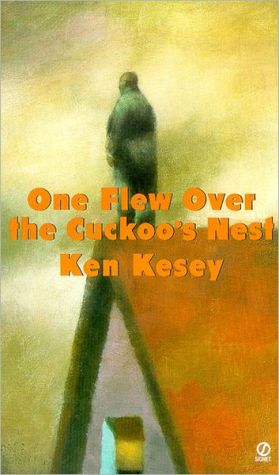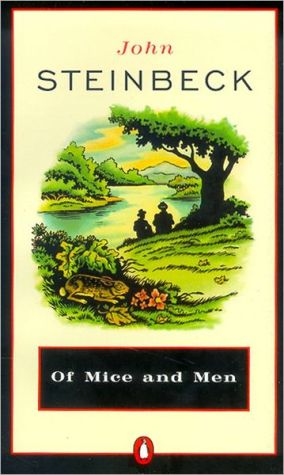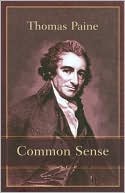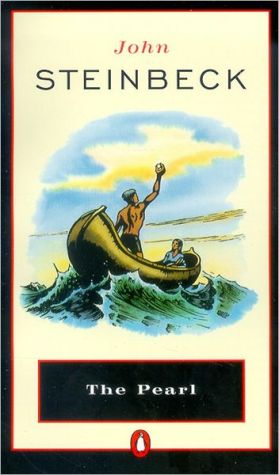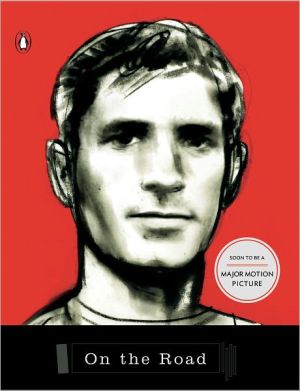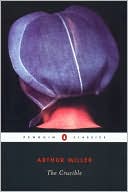One Flew Over the Cuckoo's Nest
Boisterous, ribald, and ultimately shattering, Ken Kesey's One Flew Over the Cuckoo's Nest is the seminal novel of the 1960s that has left an indelible mark on the literature of our time. Here is the unforgettable story of a mental ward and its inhabitants, especially the tyrannical Big Nurse Ratched and Randle Patrick McMurphy, the brawling, fun-loving new inmate who resolves to oppose her. We see the struggle through the eyes of Chief Bromden, the seemingly mute half-Indian patient who...
Search in google:
An international bestseller and the basis for a hugely successful film, Ken Kesey's One Flew Over the Cuckoo's Nest was one of the defining works of the 1960s. A mordant, wickedly subversive parable set in a mental ward, the novel chronicles the head-on collision between its hell-raising, life-affirming hero Randle Patrick McMurphy and the totalitarian rule of Big Nurse. McMurphy swaggers into the mental ward like a blast of fresh air and turns the place upside down, starting a gambling operation, smuggling in wine and women, and egging on the other patients to join him in open rebellion. But McMurphy's revolution against Big Nurse and everything she stands for quickly turns from sport to a fierce power struggle with shattering results. With One Flew Over the Cuckoo's Nest, Kesey created a work without precedent in American literature, a novel at once comic and tragic that probes the nature of madness and sanity, authority and vitality. Greeted by unanimous acclaim when it was first published, the book has become and enduring favorite of readers. SketchesPsychedelic sixties. God knows whatever that means it certainly meant far more than drugs, though drugs still work as a pretty good handle to the phenomena.I grabbed at that handle. Legally, too, I might add. Almost patriotically, in fact. Early psychedelic sixties...Eight o'clock every Tuesday morning I showed up at the vet's hospital in Menlo Park, ready to roll. The doctor deposited me in a little room on his ward, dealt me a couple of pills or a shot or a little glass of bitter juice, then locked the door. He checked back every forty minutes to see if I was still alive, took some tests, asked some questions, left again. The rest of the time I spent studying the inside of my forehead, or looking out the little window in the door. It was six inches wide and eight inches high, and it had heavy chicken wire inside the glass.You get your visions through whatever gate you're granted.Patients straggled by in the hall outside, their faces all ghastly confessions. Sometimes I looked at them and sometimes they looked at me. but rarely did we look at one another. It was too naked and painful. More was revealed in a human face than a human being can bear, face-to-face.Sometimes the nurse came by and checked on me. Her face was different. It was painful business, but not naked. This was not a person you could allow yourself to be naked in front of.Six months or so later I had finished the drug experiments and applied for a job. I was taken on as a nurse's aide, in the same ward, with the same doctor, under the same nurse—and you must understand we're talking about a huge hospital here! It was weird.But, as I said, it was the sixties.Those faces were still there, still painfully naked. To ward them off my case I very prudently took to carrying around a little notebook, to scribble notes. I got a lot of compliments from nurses: "Good for you, Mr. Kesey. That's the spirit. Get to know these men."I also scribbled faces. No, that's not correct. As I prowl through this stack of sketches I can see that these faces bored their way behind my forehead and scribbled themselves. I just held the pen and waited for the magic to happen.This was, after all, the sixties.Ken KeseySketches by Ken Kesey viiIntroduction by Robert Faggen ixPart One 1Part Two 127Part Three 173Part Four 223"A glittering parable of good and evil." —The New York Times Book Review"A roar of protest against middlebrow society’s Rules and the Rulers who enforce them." —TimeLibrary JournalKesey's new introduction to this anniversary edition could very well be the last thing he worked on before shuffling off this mortal coil in 2001. Additionally, 25 sketches he drew while working at a mental institution in the 1950s, the inspiration for the novel, are littered throughout. Critics are divided on the meaning of the book: Is it a tale of good vs. evil, sanity over insanity, or humankind trying to overcome repression amid chaos? Whichever, it is a great read. Copyright 2001 Cahners Business Information.
Sketches\ Psychedelic sixties. God knows whatever that means it certainly meant far more than drugs, though drugs still work as a pretty good handle to the phenomena.\ I grabbed at that handle. Legally, too, I might add. Almost patriotically, in fact. Early psychedelic sixties...\ Eight o'clock every Tuesday morning I showed up at the vet's hospital in Menlo Park, ready to roll. The doctor deposited me in a little room on his ward, dealt me a couple of pills or a shot or a little glass of bitter juice, then locked the door. He checked back every forty minutes to see if I was still alive, took some tests, asked some questions, left again. The rest of the time I spent studying the inside of my forehead, or looking out the little window in the door. It was six inches wide and eight inches high, and it had heavy chicken wire inside the glass.\ You get your visions through whatever gate you're granted.\ Patients straggled by in the hall outside, their faces all ghastly confessions. Sometimes I looked at them and sometimes they looked at me. but rarely did we look at one another. It was too naked and painful. More was revealed in a human face than a human being can bear, face-to-face.\ Sometimes the nurse came by and checked on me. Her face was different. It was painful business, but not naked. This was not a person you could allow yourself to be naked in front of.\ Six months or so later I had finished the drug experiments and applied for a job. I was taken on as a nurse's aide, in the same ward, with the same doctor, under the same nurse—and you must understand we're talking about a huge hospital here! It was weird.\ But, as I said, it was the sixties.\ Those faces were still there, still painfully naked. To ward them off my case I very prudently took to carrying around a little notebook, to scribble notes. I got a lot of compliments from nurses: "Good for you, Mr. Kesey. That's the spirit. Get to know these men."\ I also scribbled faces. No, that's not correct. As I prowl through this stack of sketches I can see that these faces bored their way behind my forehead and scribbled themselves. I just held the pen and waited for the magic to happen.\ This was, after all, the sixties.\ Ken Kesey
Sketches by Ken Kesey vii\ Introduction by Robert Faggen ix\ Part One 1\ Part Two 127\ Part Three 173\ Part Four 223
\ Library JournalKesey's new introduction to this anniversary edition could very well be the last thing he worked on before shuffling off this mortal coil in 2001. Additionally, 25 sketches he drew while working at a mental institution in the 1950s, the inspiration for the novel, are littered throughout. Critics are divided on the meaning of the book: Is it a tale of good vs. evil, sanity over insanity, or humankind trying to overcome repression amid chaos? Whichever, it is a great read. Copyright 2001 Cahners Business Information.\ \
